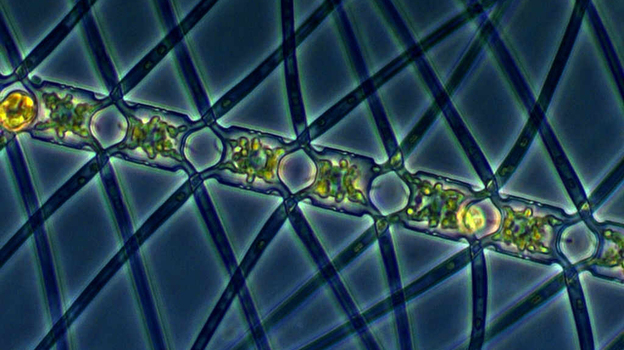We're open daily! View holiday hours
Science News
Iron Oceans
July 23, 2012

A study published in last week’s Nature made for several stories and crazy headlines (my personal favorite, “Did Marine Snot Cause the Ice Ages?” from ScienceNOW).
It all has to do with an experiment in the Indian Ocean in 2004. Scientists dumped seven tonnes of iron into an eddy in the Southern Ocean. As expected, an algal bloom followed. Scientific American describes this well:
A hunger for iron rules the microscopic sea life of the Southern Ocean surrounding ice-covered Antarctica. Cut off from most continental dirt and dust, the plankton, diatoms and other life that make up the broad bottom of the food chain there can't get enough iron to grow.
The bloom was dominated by diatoms like the one pictured above. This group of algae are known to form large, slimy aggregates (marine snot) with high sinking rates at the end of their blooms. Indeed, after about a month, over 50% of the bloom sank deeply into the ocean, taking carbon dioxide with it as it went.
Science News quotes Victor Smetacek, lead author in the study, as saying:
“Every one atom of iron removed 13,000 atoms of carbon” from the air.
While scientists suspected this, they were never able to prove it. This is likely what happened during past ice ages. The air was cooler and drier then and carried more iron-containing dust from the continents to the ocean—lavishly supplying marine phytoplankton and removing carbon, cooling the atmosphere.
Now scientists are wondering if we can cool our warming climate by simply adding iron to the ocean. National Geographic has more on this geoengineering fix and other extreme geoengineering ideas to fight global warming. If only we spent this much energy on stopping global warming…
Image: Marina Montresor, SZN, Alfred Wegener Institute